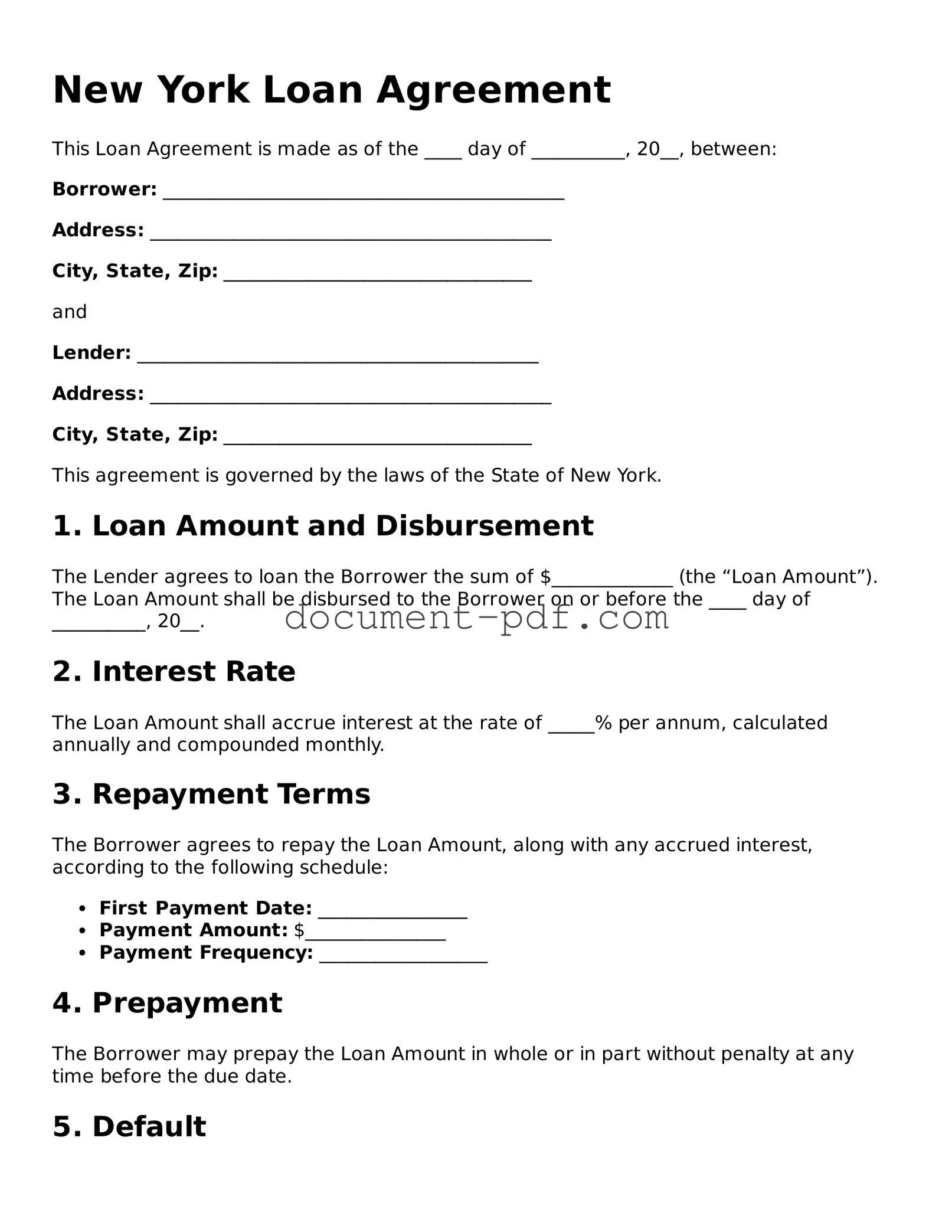New York Loan Agreement
This Loan Agreement is made as of the ____ day of __________, 20__, between:
Borrower: ___________________________________________
Address: ___________________________________________
City, State, Zip: _________________________________
and
Lender: ___________________________________________
Address: ___________________________________________
City, State, Zip: _________________________________
This agreement is governed by the laws of the State of New York.
1. Loan Amount and Disbursement
The Lender agrees to loan the Borrower the sum of $_____________ (the “Loan Amount”). The Loan Amount shall be disbursed to the Borrower on or before the ____ day of __________, 20__.
2. Interest Rate
The Loan Amount shall accrue interest at the rate of _____% per annum, calculated annually and compounded monthly.
3. Repayment Terms
The Borrower agrees to repay the Loan Amount, along with any accrued interest, according to the following schedule:
- First Payment Date: ________________
- Payment Amount: $_______________
- Payment Frequency: __________________
4. Prepayment
The Borrower may prepay the Loan Amount in whole or in part without penalty at any time before the due date.
5. Default
If the Borrower fails to make any payment when due, the Lender may consider this Loan Agreement in default. In such event, the entire Loan Amount, together with any accrued interest, shall become immediately due and payable.
6. Governing Law
This Loan Agreement shall be governed by and construed in accordance with the laws of the State of New York.
7. Signatures
By signing below, both parties acknowledge that they have read, understood, and agreed to the terms of this Loan Agreement.
Borrower's Signature: ___________________________ Date: __________
Lender's Signature: ___________________________ Date: __________
